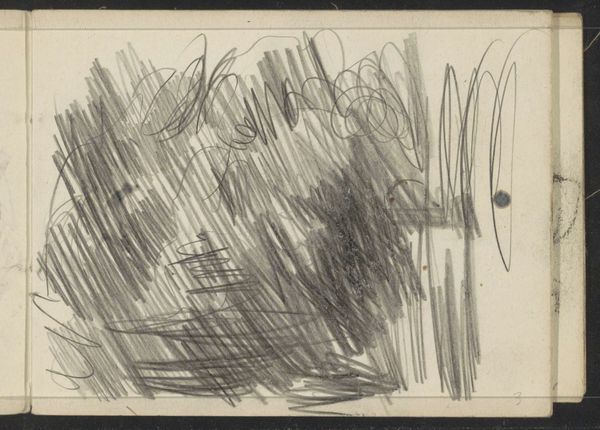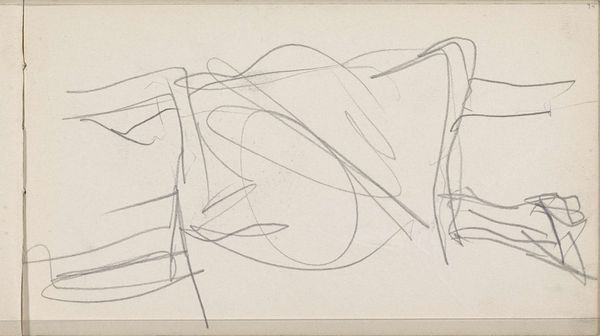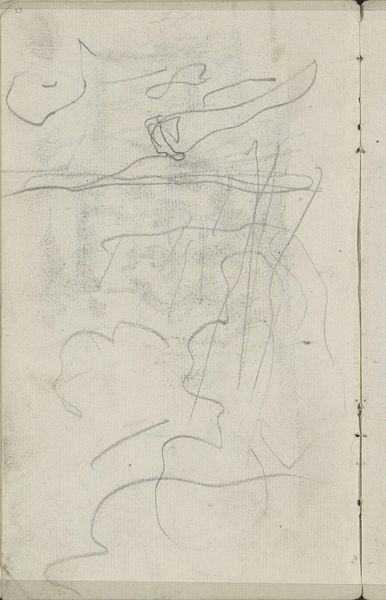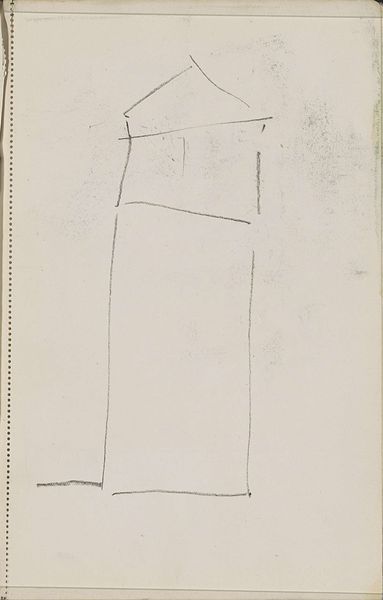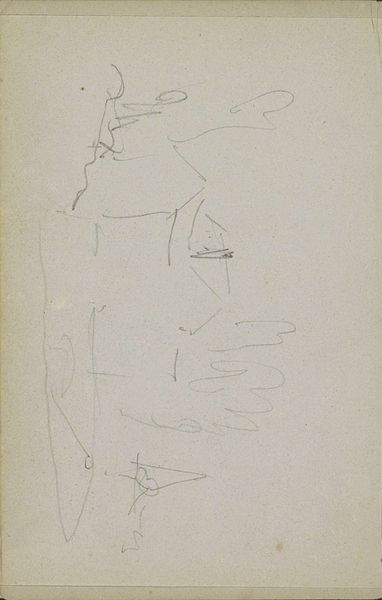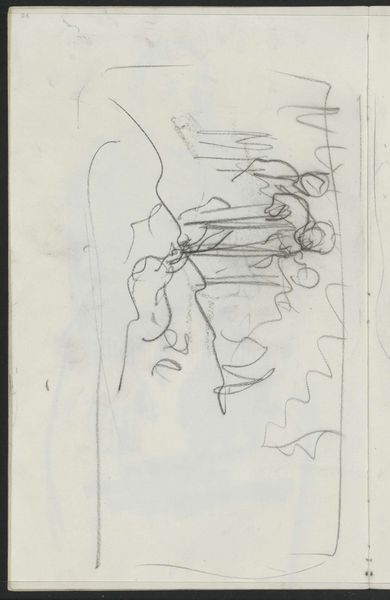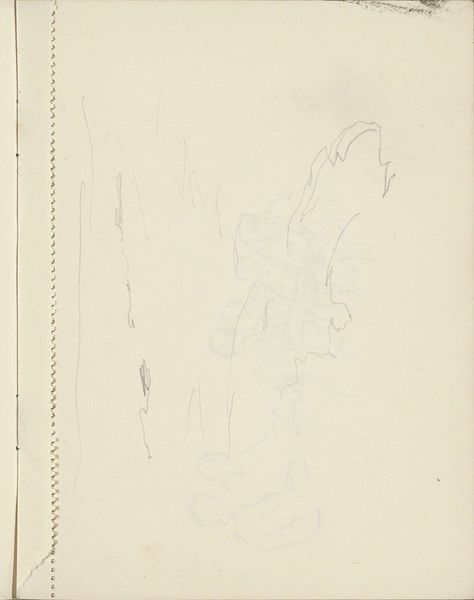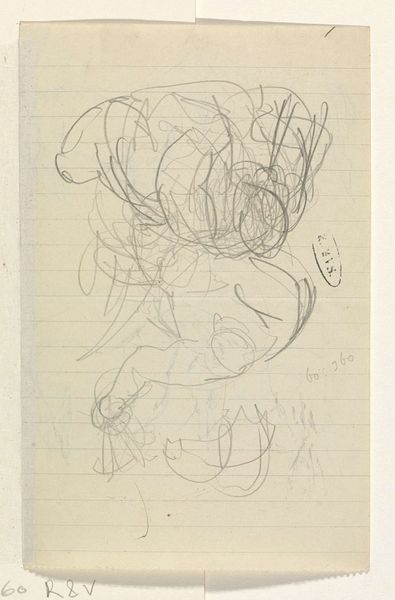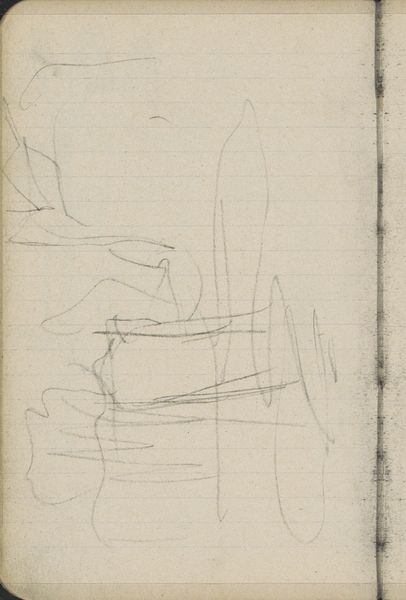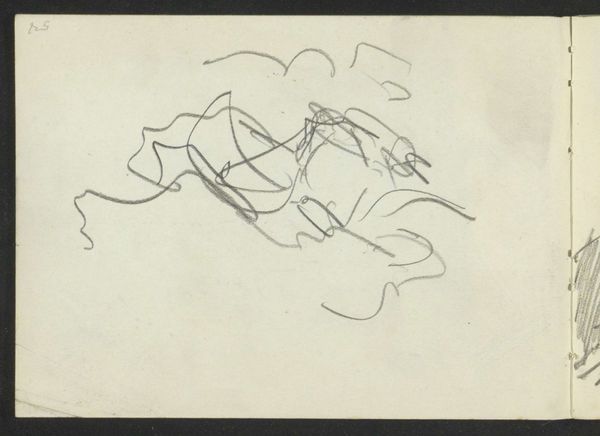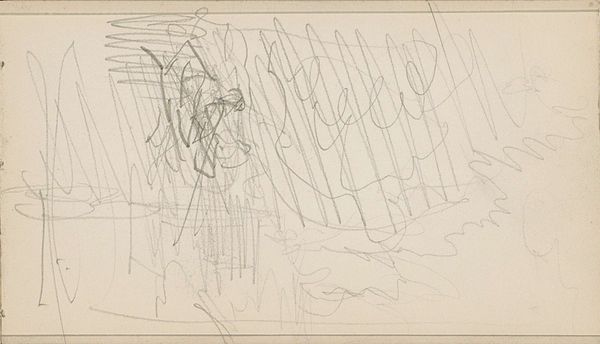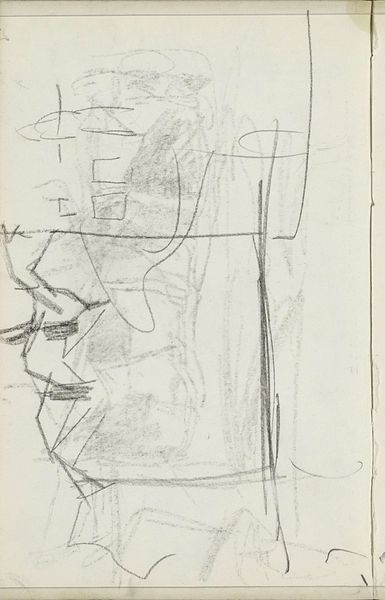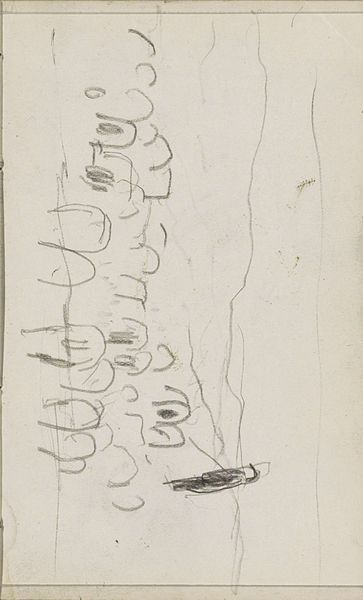
drawing, paper, typography, pencil
#
drawing
#
light pencil work
#
shading to add clarity
#
old engraving style
#
hand drawn type
#
paper
#
personal sketchbook
#
typography
#
idea generation sketch
#
pencil
#
ink colored
#
sketchbook drawing
#
shading experimentation
#
sketchbook art
#
modernism
Dimensions: height 153 mm, width 105 mm, height 120 mm, width 80 mm
Copyright: Rijks Museum: Open Domain
Editor: Here we have Leo Gestel’s pencil drawing, "Maandblad Verf en Kunst van P.A. Regnault (ontwerp)," dating from before 1941. It seems to be a preliminary sketch for a magazine cover, perhaps? The linework is so energetic, but also quite raw. I’m curious, looking at this piece, what stands out to you? Curator: It’s fascinating how Gestel uses this medium. Pencil, usually associated with quick studies or academic exercises, here takes on the task of designing for mass media. Consider the context: the rise of illustrated magazines and the growing importance of visual culture in the early 20th century. This drawing offers insight into the process by which art and design intersected to influence public taste and opinion. Who was Regnault, and what was the nature of Verf en Kunst as a magazine? Did it focus on art criticism, practical advice for artists, or advertising materials? Editor: I didn't even think about the function of this drawing as part of magazine culture. I'm so used to thinking about "high" art! The title at the top clearly says it has something to do with art, and the hand reaching in from the side… it makes me wonder about the creative act, about artistic labour. Curator: Precisely. This sketch might reflect on contemporary notions about the artist, their role in society, and the commodification of art itself. Is Gestel presenting an idealized or perhaps even a critical view of these concepts? What could his approach be signaling about the broader relationship between art, commerce, and public perception during the interwar period? What statement did he want to make about Art? Editor: So, it's not just a quick sketch. It is evidence of the design process in art’s intersection with commercial appeal and potentially artistic commentary itself. Thinking about the cultural role and the impact of visual media during that time gives this drawing new weight. I learned a lot. Thank you! Curator: And I’m left thinking more deeply about art as a part of culture that reaches the masses. It also highlights the changing social status of design as a kind of cultural production, beyond mere aesthetics, wouldn't you say?
Comments
No comments
Be the first to comment and join the conversation on the ultimate creative platform.
